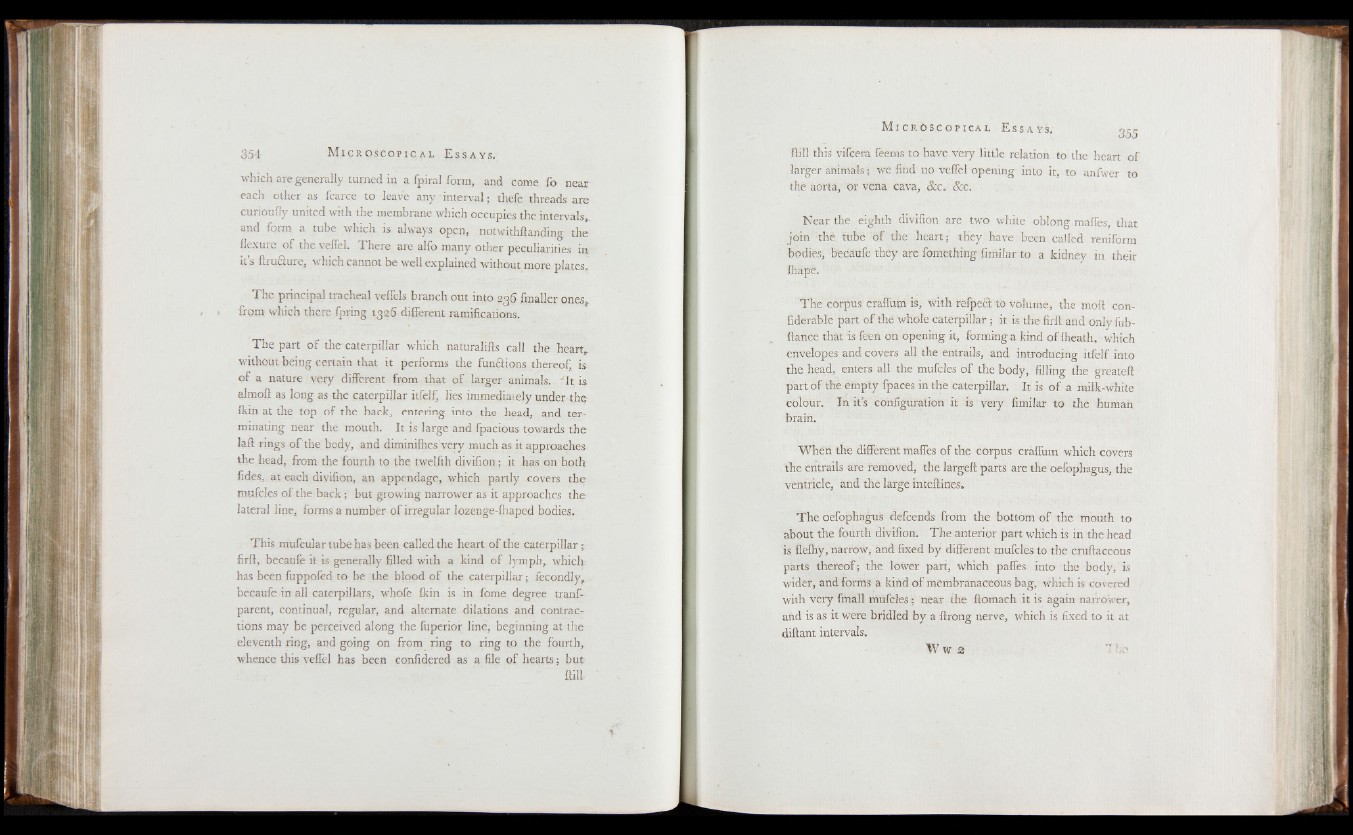
which are generally turned in a fpiral form, and come fo near
each other as fcarce to leave any • interval; thefe threads ar&
curioufly united with the membrane which occupies the intervals,
and form a tube which is always open, notwithftanding the
flexuie of the vefiel, There are alio many other peculiarities in
it’s ftru&ure, which cannot be well explained without more plates.
The principal tracheal veflels branch out into 2^6 /mailer ones
from which there fpring 1326 different ramifications.
The part o f the-caterpillar which naturalifts call the heart,
without being certain that it performs the functions thereof, is-
o f a nature very different from that of larger animals. 'I t is
almofl as long as the caterpillar itfelf, lies immediately under the
fkin at the top o f the back, entering into the head, and terminating
near the mouth. It is large and fpacious towards the
laft rings o f the body, and diminifhes very much as it approaches
the head, from the fourth to the twelfth divifion; it has on both
fides, at each divifion, an appendage, which partly covers the
mufcles of the back; but growing narrower as it approaches the
lateral line, forms a number of irregular lozenge-fhaped bodies.
This mufcular tube has been called the heart o f the caterpillar;
firft, becaufe it is generally filled with a kind o f lymph, which
has been fuppofed to be the blood of the caterpillar; fecondly,
becaufe in all caterpillars, whofe ikin is in fome degree tranf-
parent, continual, regular, and alternate dilations and contracr
tions may be perceived along the fuperior line, beginning at the
eleventh ring, and going on from ring to ring to the fourth,
whence this vefiel has been confidered as a file o f hearts; but
fiill
fiill this vifcera feems to have very little relation to the heart o f
larger animals; we find no vefiel opening into it, to anfwer to
the aorta, or vena cava, See. See.
Near the eighth divifion are two white oblong maffes, that
join thé. tube o f the heart; they have been called reniform
bodies, becaufe they are fomething fimilar to a kidney in their
ihape.
The corpus crafl'utn is, with refpeft to volume, the tnoft con-
fiderable part of the whole caterpillar ; it is the firft and only fub-
ftance that is feen on opening it, forming a kind o f fheath, which
envelopes and covers all the entrails, and introducing itfelf into
the head, enters all the mufcles o f the body, filling the greateft
part o f the empty fpaces in the caterpillar. It is o f a milk-white
colour. In it’s configuration it is very fimilar to the human
brain.
When the different maffes o f the corpus craffum which covers
the entrails are removed, the largeft parts are the oefophagus, the
ventricle, and the large inteftines.
The oefophagus defeends from the bottom o f the mouth to
about the fourth divifion. The anterior part which is in the head
is flefhy, narrow, and fixed by different mufcles to the cruftaceous
parts thereof; the lower part, which paffes into the body, is
wider, and forms a kind o f membranaceous bag, which is covered
with very fmall mufcles ; near the ftomach it is again narrower,
and is as it were bridled by a ftrong nerve, which is fixed to it at
diftant intervals.
W w 2